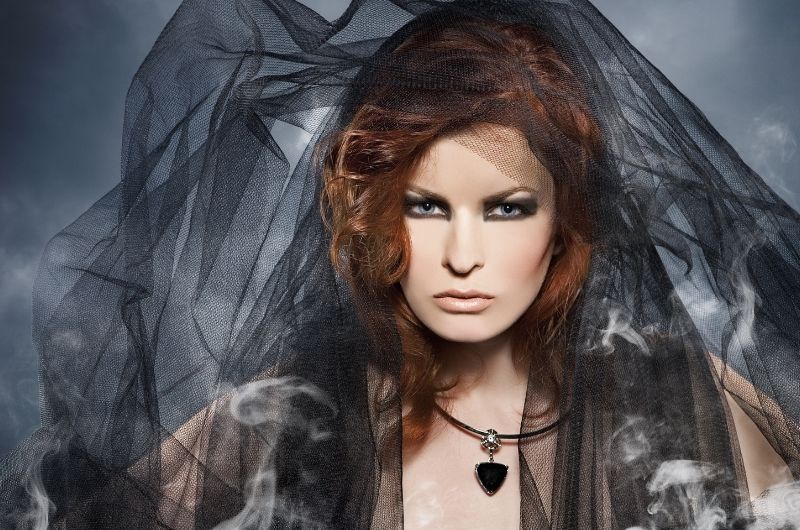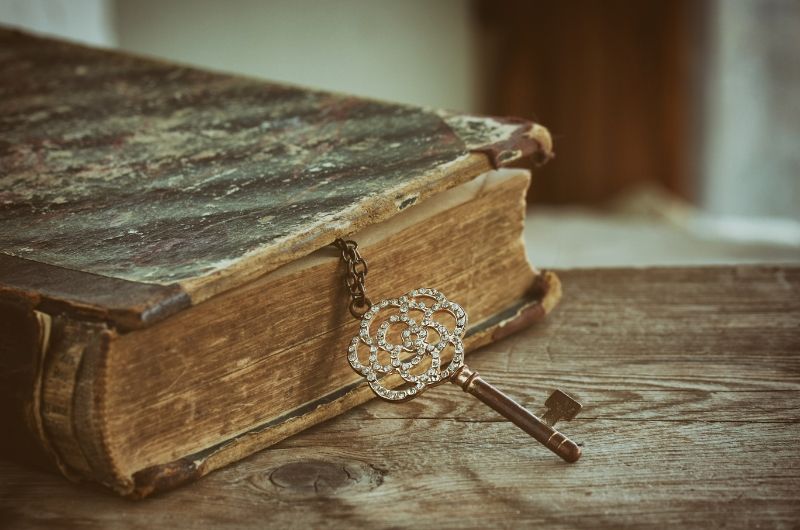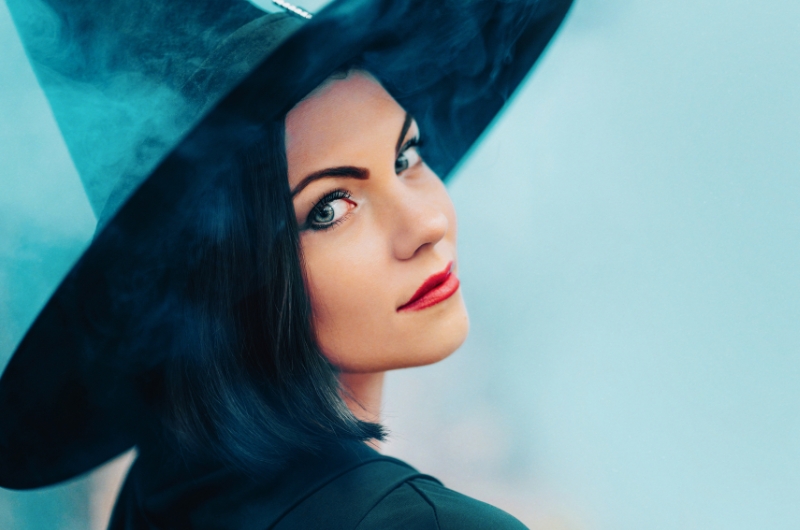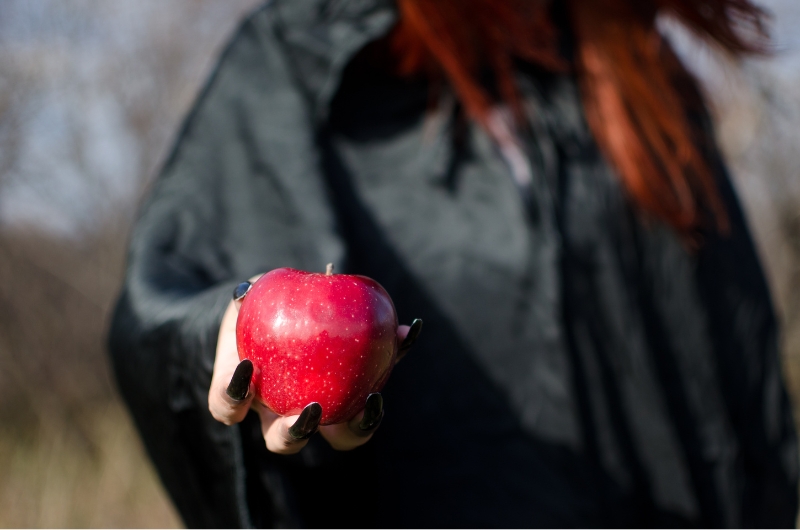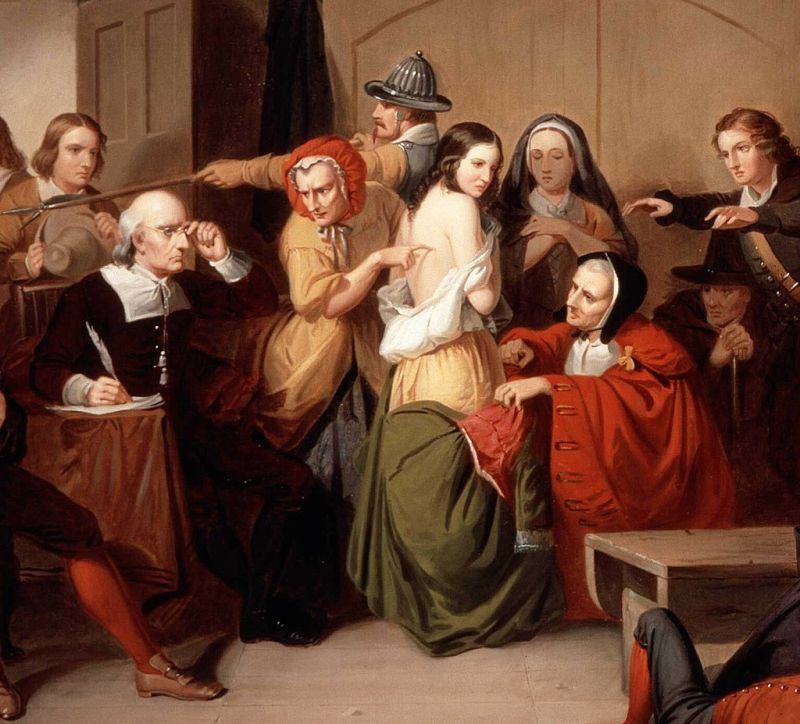
Do witches really exist?
Discover the magical world of witchcraft
The Witch Guide is your key to the fascinating world of witchcraft, providing insight into ancient traditions and modern practices. Join us on an exciting journey through magical secrets and immerse yourself in the multifaceted culture of the witching arts.

Witches have been a part of human history and culture for centuries and are often associated with magical abilities, spells, and potions.
The History Of Witches
But do witches really exist?
The question of whether witches are real depends on the definition and context.
If we speak of witches as supernatural beings with magical powers, there is no scientific evidence to support their existence.
The idea of witches as such is more of a cultural phenomenon that manifests itself in mythology, folklore, and pop culture. However, witchcraft as a spiritual practice is a real and growing movement practiced by many people all around the world.
In this sense, witches are real, but not in the traditional, supernatural sense.
For example, they are people who dedicate themselves to an alternative spiritual practice to enhance their connection to nature and promote their personal growth.

Modern Witches
In today's world, witchcraft as a spiritual practice has experienced a renaissance. Many people, especially women, turn to witchcraft as an expression of their spiritual beliefs and personal power.
Here, it is less about supernatural abilities and more about the connection with nature, awareness of one's inner strengths, and the ability to manipulate positive changes in one's own life and in the world.
There are various forms of modern witchcraft, such as:
- Wicca
- Paganism
- Shamanism
Each with their own rituals, practices, and beliefs. These practices often include meditation, herbalism, energy work, and the celebration of natural cycles and seasonal festivals.
Video: Inside The Secret World Of Modern Day Witches
The History of Witches
Witchcraft has been present in various forms throughout human history, with witch figures appearing in the mythology and folklore of numerous cultures. In ancient Egypt, priests and priestesses practiced magical rituals, while in ancient Greece it was believed that witches could control the elements and cast spells.
During the Middle Ages and the Renaissance, however, the idea of witches as malicious beings spread.
During this time, witch hunts and witch trials expanded, with thousands of accused witches, primarily women, being executed for witchcraft.
The witch trials were fueled by fear and superstition, with many people believing that witches consorted with the devil and brought harm to their community.

Witches in Movies and Books
Movies and books have played a significant role in shaping our understanding and perception of witches. From the evil witches in fairy tales like "Hansel and Gretel" and "Snow White" to the beloved characters in books and movies like the Harry Potter series and "The Wizard of Oz," witches have been portrayed in various ways.
While these portrayals often perpetuate the stereotype of witches as malicious or mysterious beings, there are also many positive portrayals of witches using their magic for good.

Origins of Witches in America
The origins of witches in America are diverse and can be traced back to different cultural influences. When European settlers arrived in North America in the 17th century, they brought with them their own ideas about witchcraft and magic. These were often shaped by Christian traditions, particularly the belief in evil and the role of the devil.
At the same time, African traditions played a significant role in the emergence of witchcraft in America. Slaves brought from West Africa to the New World carried their own religious beliefs and practices, which later blended with European and American systems. This led to the creation of syncretic religions such as Voodoo in the southern part of the United States and the Caribbean.
In addition, the indigenous American cultures had their own spiritual beliefs and practices, which often included healers, shamans, and other spiritual leaders. Although these practices were often seen as "pagan" or "demonic" by the European settlers, they still had an influence on the concept of witchcraft in America.
The blending of these various cultural traditions and belief systems resulted in the emergence of a distinct form of witchcraft in America, which evolved over time and laid the foundation for the notorious witch trials, particularly the Salem witch trials.
Influences from Europe and Africa
The witch persecution in America was significantly shaped by cultural influences from Europe and Africa. European settlers brought their ideas about witchcraft, superstition, and demonology, which were based on Christian beliefs and the witch hunts in Europe. In particular, the Inquisition and witch trials in medieval and early modern Europe influenced the perception and persecution of witches in the New World.
European settlers were familiar with writings like the Malleus Maleficarum (Hammer of Witches), a handbook for witch hunters that helped spread the idea of witches as servants of the devil. These ideas were adopted in America, leading to a culture of fear and superstition that culminated in the witch trials.
African traditions also played a crucial role in the emergence of witchcraft in America.
Slaves who were brought from West Africa carried their own religious beliefs and practices, which included elements of magic and spirit conjuration. These novel traditions blended with European and American belief systems, leading to the emergence of syncretic religions such as Voodoo and Hoodoo.
The mixture of European and African influences created a cultural climate that contributed to the emergence and spread of witchcraft in America. The fear of witchcraft and its persecution reflects both the religious beliefs and social tensions that shaped American society during this time.
Native American Traditions
Native American traditions also had a significant impact on the concept of witchcraft and spiritual practices in America. Prior to the arrival of European settlers, indigenous peoples had their own belief systems and cultural practices closely tied to nature and the spiritual world.
In many Native American cultures, there were shamans or medicine men and women who acted as spiritual leaders and healers within their communities. They performed rituals and ceremonies to heal illnesses, ward off evil spirits, or seek the blessings of spirits for a successful hunt or harvest. Some of these practices were interpreted as witchcraft by European settlers, although they were in reality part of the spiritual traditions of indigenous peoples.
The encounter between European settlers and Native American peoples led to a blending of belief systems and practices. Some aspects of indigenous traditions were adopted by the settlers, while others were rejected as pagan or demonic. In some cases, indigenous healers and spiritual leaders were viewed and persecuted as witches by the settlers.
Despite these cultural conflicts and misunderstandings, Native American traditions contributed to the emergence of a comprehensive and complex concept of witchcraft in America. The spiritual practices of indigenous peoples also influenced the development of syncretic religions and alternative spiritual movements that continued in later centuries in the United States.



